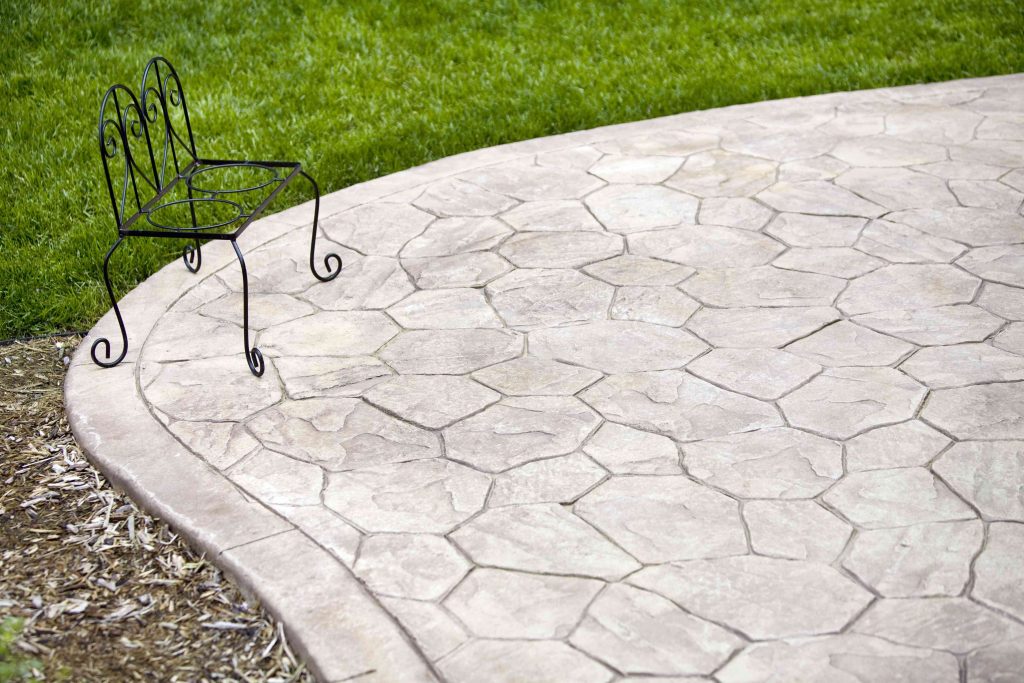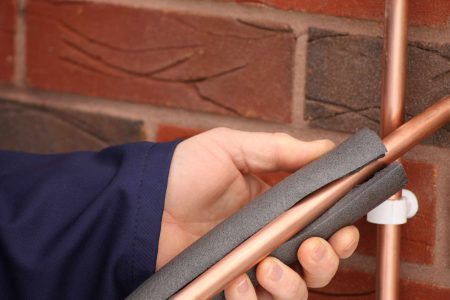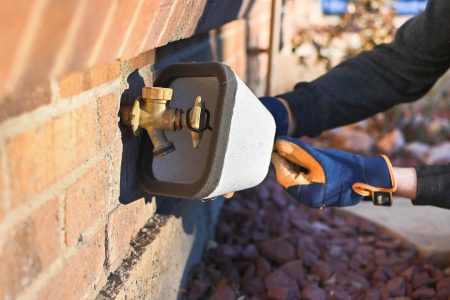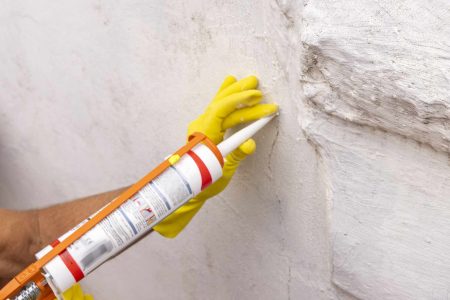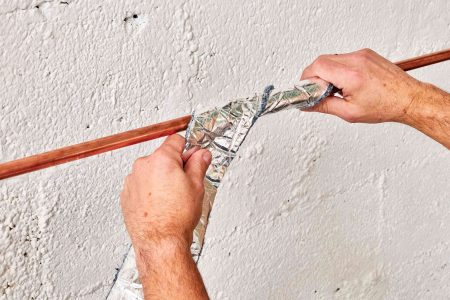Learning how to stain concrete floors will enable you to refresh your space’s look without pouring new concrete. Relatively inexpensive, concrete stain can breathe new life into old concrete and help protect it for years to come, especially when paired with a quality concrete sealant. Staining concrete is straightforward whether the concrete floors are inside or on a patio.
However, there are a few crucial steps to getting the finish right. Below, we’ve explained how to stain concrete floors and provided tips to help your concrete staining job go off without a hitch.
Warning
Staining concrete involves the use of chemicals. Always use proper PPE (mask, safety glasses, gloves, etc.) and work in a well-ventilated area when possible. If working indoors, open windows and doors and set up a fan to increase ventilation.
How to Choose a Concrete Stain
There are different types of concrete stains, namely acid-based and water-based, each with pros and cons that may make them better or worse for your intended use.
- Acid-based concrete stain: Acid-based concrete stain reacts chemically with the concrete to create a variegated finish on the surface. After application, a neutralizing agent must be applied to stop the reaction. The timing of the application of the neutralizer is what will determine the final look of the finish.
- Water-based concrete stain: Water-based concrete stain is similar to wood stain. Rather than having a chemical reaction, water-based concrete stain simply penetrates the concrete’s surface and colors it with iron oxide pigments. No neutralizing agent is required for water-based stains. Instead, you must let the stain dry, sometimes for 24 hours or more.
What You’ll Need
Equipment / Tools
- Broom and dust pan
- Wet/dry vacuum
- Pressure washer (optional)
- Stiff brush
- Caulk gun
- Drop cloth
- Airless sprayer (optional)
- Brush and roller (optional)
Materials
- Neutralizing agent (if using acid-based stain)
- Water-based or acid-based concrete stain
- Concrete sealant
- Degreaser
- Concrete crack filler
- Painter’s tape
Instructions
How to Stain Concrete Floors and Patios
-
Thoroughly Clean the Concrete
To ensure the highest quality finish when staining concrete, you must clean the concrete thoroughly before applying the stain.
- Remove all dirt, dust, and debris from the surface.
- If the concrete is excessively dirty or has stuck-on grime, you’ll need to scrub this off using a stiff brush and a mild detergent before rinsing the surface.
-
Repair Cracks
Take time to fill the cracks using a concrete crack filler or patching compound.
For thin cracks, apply concrete crack filler using a caulk gun, then let it dry according to the manufacturer’s instructions. This often takes at least 24 hours, so plan accordingly.
-
Prepare the Space
Cover any objects that can’t be removed with drop cloths and painter’s tape to guard them against the concrete stain.
-
Apply the Stain Using a Sprayer or Roller and Brush
You can apply concrete stain using a sprayer or roller and each method has its advantages.
- Sprayer method: Using an airless sprayer is ideal for applying concrete stain in large areas, as it’s quick and easy to cover a lot of ground. For spray application, spray an even coating and maintain a wet edge by slightly overlapping coats. Move smoothly, adjusting your speed to control the amount of stain you spray. Ideally, you evenly coat the surface without spraying enough spray to puddle on the surface.
- Roller and brush method: The roller and brush application method is great for smaller areas and spaces with tight corners, but it takes more time than a sprayer. Simply roll a light, even coat of stain onto the floor much like you would paint, then fill in the edges and tight spots with the brush.
-
Neutralize the Stain (Acid-Based Stain Only)
For acid-based concrete stains, the chemical reaction will continue to take place until a neutralizing agent is used on the surface. The timing of the neutralizing agent is what determines the final look of the surface.
Follow the manufacturer’s instructions to determine the proper window for applying the neutralizing agent, as well as what should be used as a neutralizing agent. It’s often as simple as washing the surface with mild detergent and water.
-
Seal the Concrete
Once the stain is fully dry, coat the surface with a concrete sealer to protect the beautiful finish. Some concrete stains can take at least 24 hours to fully dry before a sealant can be applied.
Want more home reno project tips and inspiration? Sign up for our free daily newsletter for the latest how-tos, reno guides, and more!
Concrete Staining Tips
- Get the concrete as clean as possible before staining.
- Fill cracks before staining to achieve a smooth surface.
- If your concrete surface is too rough, look into sanding and polishing options to smooth it out before staining it.
- Work your way out of the room to avoid blocking yourself in.
- If you don’t have the proper tools, renting them will make the project go smoothly.
-
How do you prepare concrete for staining?
To prepare a concrete floor for staining, it’s important to get the concrete as clean as possible to ensure the stain can fully bond with the surface. Remove all dust, dirt, and debris and scrub away any stubborn grit or grime. If oil or other stains are present, remove them using a degreaser.
-
Can you stain over existing concrete?
Yes, existing concrete is ideal for staining, and applying concrete stain can freshen up older, dull concrete.
In fact, new concrete must cure for several weeks before the stain can be applied, so older concrete is a great candidate for concrete stain, as it’s already fully cured.
-
What kind of stain do you use to stain concrete?
Concrete stain comes in two main varieties: Water-based and acid-based. Water-based concrete stain is a more traditional stain that penetrates the concrete with pigments to alter the surface’s color.
Instead of penetrating the concrete, the acid-based stain has a chemical reaction to the concrete, which is what colors the surface of the concrete.
Read the full article here



